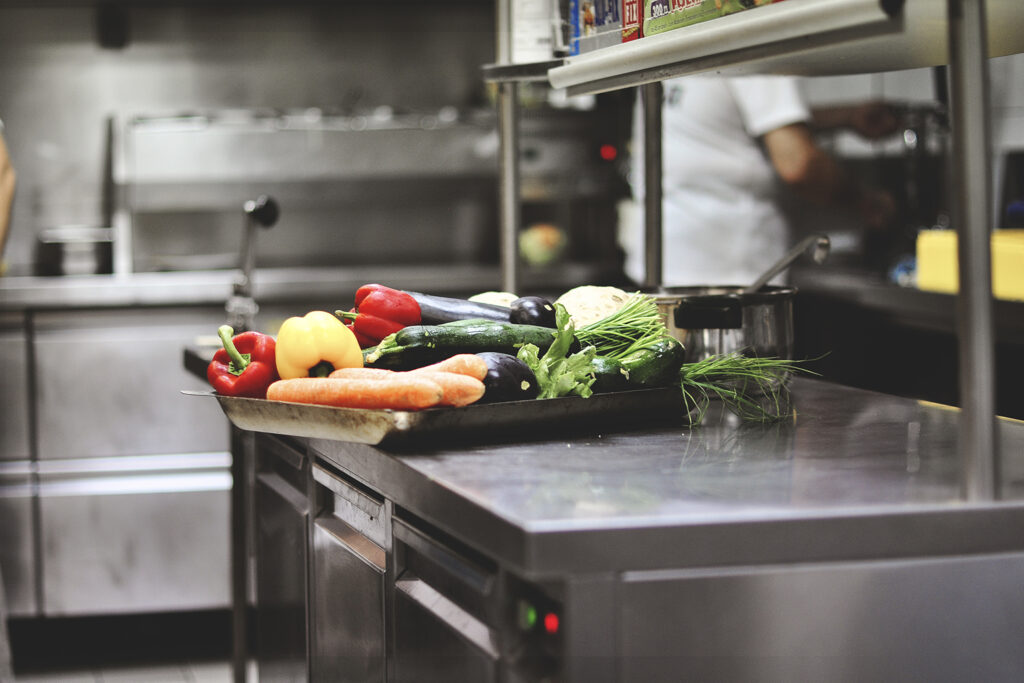Food safety is a top priority for restaurant owners. According to the CDC, an estimated 128,000 people are hospitalized due to foodborne illnesses every year. Further, 3,000 of those annual cases are fatal. The liability for restaurant owners is substantial. Poor food safety measures can result in heavy fines, loss of licensure, or even forced shutdowns. A single incident of food poisoning can cost a restaurant thousands–or even millions–of dollars in litigation costs. In fact, the USDA estimates that foodborne illnesses cost businesses more than $15.6 billion each year.
Beyond the financial risks, the “soft costs” to restaurants that lose the battle for food safety include damaged reputation, low employee morale, and reduced organizational confidence.
How can restaurant owners keep their customers safe, all while protecting their restaurants and employees from the consequences of poor sanitation? This blog will review the causes of food poisoning, detail restaurant food safety best practices, and provide a quick sanitation checklist.
What is food poisoning?
The CDC has identified over 250 foodborne illnesses. Most originate from pathogens — viruses, bacteria, fungal spores, and parasites — but many are caused by contamination from toxins and chemicals. Pathogens such as Salmonella or Norovirus cause most foodborne illnesses in the United States. However, other pathogens such as Listeria or E. coli, while rarer, are more harmful and often lead to hospitalization.
According to a public health report, the litigation damages against restaurants can increase by hundreds of thousands of dollars if the outbreak is considered rare and preventable. Listeria, for example, resulted in damages over $300,000 higher than a Bacillus cereus outbreak.
Download our free eBook:
Preventing Foodborne Diseases in Restaurants
Food safety best practices for restaurant management
There are a few steps that restaurant owners can take to minimize food safety risks. Firstly, all kitchen staff must be certified in sanitation by SafeServ. There must be at least one employee with the Person in Charge (PIC) certification onsite at all times. Most likely, you will need to have several certified PICs to ensure someone is onsite during all hours of operation.
PICs need to maintain a food safety log to record the date food was purchased, expiration dates, and the temperatures of fridges, freezers, and walk-in coolers. Restaurant owners should plan “self-inspections” and frequent walkthroughs to ensure food safety standards are being followed.
Regulations vary by state, so check the USDA website to familiarize yourself with the rules in your area.
Read more:
5 Steps Your Restaurant Can Take to Reduce Foodborne Illness Liability
Restaurant food safety checklist
It is a good idea for restaurant owners and managers to receive SafeServ certifications. Much of the SafeServ training can be condensed into four simple categories: clean, separate, cook, and chill.
Clean
- All staff must wash hands at regular intervals.
- Handwashing stations must be in good working order and stocked with antibacterial soap.
- Display OSHA posters about proper handwashing techniques.
- Wash dishes in a regulation three-compartment sink and a commercial dishwasher.
- All kitchen surfaces must be regularly sanitized throughout the day and at the start and end of each shift.
Separate
- Keep raw foods like meat, eggs, and poultry separate from other ingredients to avoid contamination.
- Use dedicated cutting boards for raw foods.
- Manage fridge space to keep raw foods from touching and juices from dripping on other ingredients.
- Store chemicals separately from food to avoid contamination.
- Store all ingredients at least six inches off the ground.
Cook
- Cook all raw foods to the proper internal temperature and check with a food thermometer (this chart is a handy reference) because it is almost always impossible to tell my color if food is fully cooked.
- Don’t allow cooked food to sit at room temperature for more than two hours (one hour if exposed to temperatures over 90 degrees).
Chill
- Properly monitor refrigerator and freezer temperatures.
- Refrigerators must stay below 40 degrees Fahrenheit, and freezers need to be below 0 degrees Fahrenheit.
- Promptly refrigerate or freeze any raw ingredients.
- Refrigerate any previously cooked or perishable food within two hours (one hour if exposed to temperatures over 90 degrees).
For a more thorough guide, see this health inspection checklist.
(Note: The above information is intended as a reference guide only and is not intended to replace SafeServ training, which is highly recommended for all restaurant kitchen staff and managers.)
Also read:
5 Reasons for Internal Restaurant Safety Audits
Protect your restaurant from food sanitation risk
Restaurant food safety is a never-ending battle. With due diligence, owners can mitigate the bulk of the risk. However, despite restaurant owners’ and managers’ best efforts, the risk of food poisoning slipping through the cracks is considerable. All it takes is one breakthrough case to expose restaurants to devastating litigation and fines.
McGowan Program Administrators Restaurants, Bars, & Taverns Insurance offers unique and distinctive coverage options to meet the unique needs of your restaurant, bar, or other food-based business. Take every measure to safeguard against the damaging effects of foodborne illnesses by ensuring your insurance policy is up to date. Contact us today to get started.


